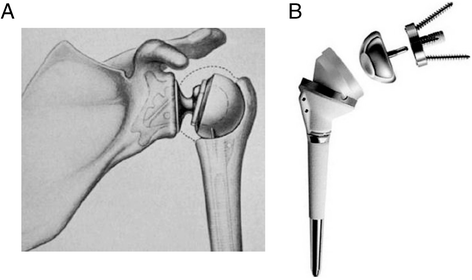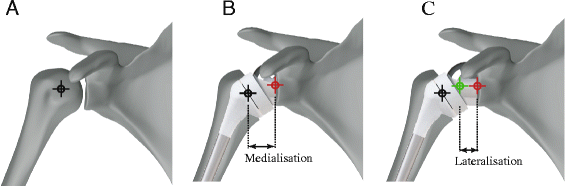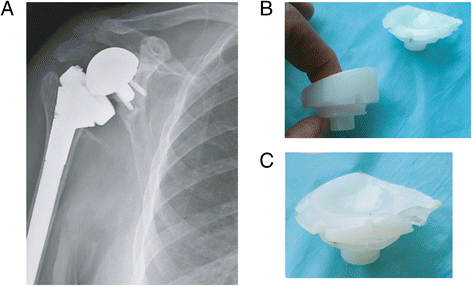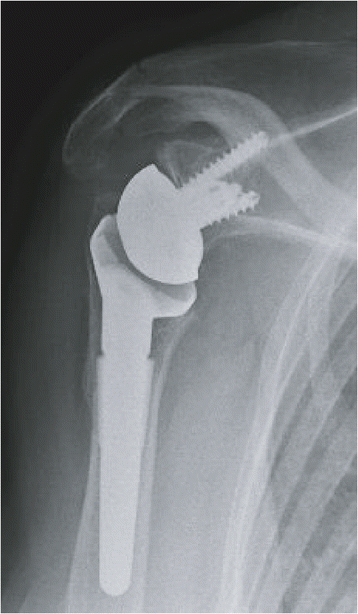Prosthesis design and placement in reverse total shoulder arthroplasty
- PMID: 26135298
- PMCID: PMC4493953
- DOI: 10.1186/s13018-015-0244-2
Prosthesis design and placement in reverse total shoulder arthroplasty
Abstract
The management of irreparable rotator cuff tears associated with osteoarthritis of the glenohumeral joint has long been challenging. Reverse total shoulder arthroplasty (RSA) was designed to provide pain relief and improve shoulder function in patients with severe rotator cuff tear arthropathy. While this procedure has been known to reduce pain, improve strength and increase range of motion in shoulder elevation, scapular notching, rotation deficiency, early implant loosening and dislocation have attributed to complication rates as high as 62%. Patient selection, surgical approach and post-operative management are factors vital to successful outcome of RSA, with implant design and component positioning having a significant influence on the ability of the shoulder muscles to elevate, axially rotate and stabilise the humerus. Clinical and biomechanical studies have revealed that component design and placement affects the location of the joint centre of rotation and therefore the force-generating capacity of the muscles and overall joint mobility and stability. Furthermore, surgical technique has also been shown to have an important influence on clinical outcome of RSA, as it can affect intra-operative joint exposure as well as post-operative muscle function. This review discusses the behaviour of the shoulder after RSA and the influence of implant design, component positioning and surgical technique on post-operative joint function and clinical outcome.
Figures





References
-
- Grammont PM, Trouilloud P, Laffay JP, Deries X. Etude et réalisation d’une nouvelle prosthèse d’épaule. Rhumatologie. 1987;10:407–18.
Publication types
MeSH terms
LinkOut - more resources
Full Text Sources
Other Literature Sources

